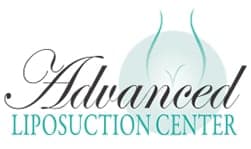Male breast enlargement

The medical term for unwanted breast enlargement in men is known as gynecomastia (guy-nuh-koh-MAS-tee-uh). It’s not at all uncommon, and in nearly all cases appears without symptoms. Many patients, however, are significantly distressed by the appearance of the condition. This can lead to social isolation, lowered self-esteem, anxiety, and depression which can significantly lower a patient’s quality of life.
While gynecomastia can develop at any time most cases occur in three distinct age groups. Up to 90% of infants display this type of benign breast enlargement, which is often considered a normal part of having “baby fat.” A further 50-60% of boys going through puberty experience temporary gynecomastia. Finally, about 70% of men over the age of 60 develop the condition. Most men who seek surgical treatment have gynecomastia which has persisted into the 2nd through 4th decade of life.
Many things can contribute to this condition yet the single largest factor are hormonal changes. As such, most cases resolve on their own. In a minority of men gynecomastia persists into later life, and it is these individuals who are most likely to seek surgical correction.
Symptoms of gynecomastia
This common condition can be identified by the following symptoms. Also note that symptoms almost always appear bilaterally, meaning in both breasts.
- Swollen breast (glandular) tissue.
- Enlarged nipples.
- Tenderness of the breasts.
When to consult a doctor
It’s recommended to seek medical treatment if you experience any of the following symptoms.
- Excessive swelling.
- Excessive tenderness.
- Any level of pain beyond mild discomfort.
- A discharge from the nipples.
- If symptoms persist later into life and cause significant psychological distress.
Causes of gynecomastia
Gynecomastia is usually caused by several factors acting at once. Hormonal changes play the largest role in the majority of cases, however. This usually takes the form of a decline in testosterone, the male sex hormone. Conversely an increase in the female sex hormone, estrogen, is primary cause in a minority of cases.
In reality most cases aren’t an either / or scenario. This means that a moderate decline in testosterone coupled with a modest increase in estrogen is the driving factor.
Age-related hormonal changes
The male and female sex hormones regulate all aspects of what are known as secondary sex characteristics. Testosterone controls classical male traits such as increased muscle mass and an increase in body hair. Estrogen controls all aspects of female sexual development, including breast development. Since both hormones are present in both genders proper development is really a question of relative balance. If a male is producing too little testosterone or too much estrogen breast enlargement can occur, resulting in what we know as gynecomastia.
In all males (and females) hormone levels aren’t fixed at a single, constant level. They vary considerable as we age, making certain age groups much more prone to breast enlargement.
Changes in the relative levels of the two sex hormones usually occur during the following periods.
- Newborns and infants. Over half of all males are born with some degree of gynecomastia. This is largely due to the effects of the mother’s high estrogen levels during fetal development. This usually corrects itself in less than a month as the baby’s hormones naturally reach their proper levels.
- During puberty. Gynecomastia is also very common in boys immediately before, during, and after puberty. While this can be acutely embarrassing the condition typically resolves itself in about a year. In rare cases gynecomastia persists for greater than two years.
- Older men. Approximately 25-50% of men over the age of 50 display gynecomastia. This is due almost entirely to naturally declining levels of testosterone.
Medication can influence gynecomastia
A variety of commonly prescribed drugs can also contribute to breast enlargement.
- Certain drugs used to control prostate enlargement such as finasteride (Proscar) and spironolactone (Aldactone). They don’t cause breast enlargement in most cases even though they directly reduce testosterone levels.
- Anabolic steroids, whether used illicitly or prescribed legally. With mid-long term use the body begins to produce less testosterone on its. When discontinued, it can take months for production to return to normal levels. This is known as testosterone suppression and can often cause gynecomastia.
- HIV and AIDS medications. Certain medications known as Highly Active Antiretroviral Therapy agents (HAARTs) often produce breast enlargement. One of the most commonly used HAARTs, Sustiva (efavirenz), causes high rates of gynecomastia as a side effect. This is seen as a small tradeoff since this drug has proven highly effective.
- Benzodiazepines, a widely used and highly addictive class of anti-anxiety (anxiolytic) drugs. These include Xanax (alprazolam), Klonopin (clonazepam), and diazepam (Valium).
- Tricyclic antidepressants such as amitriptyline. While clinically effective these medications are notorious for a wide variety of side effects.
- Common antibiotics including isoniazid and metronidazole.
- Many chemotherapy agents and other medications used to treat cancer.
- Medications for bowel stasis, notably metoclopramide (Reglan).
- Diuretics such as digoxin (Lanoxin) used to treat congestive heart failure
- Calcium channel blockers such as Amlodipine (Norvasc) used in the treatment of heart disease.
Recreational drugs can contribute to gynecomastia
Commonly abused drugs which are known factors in causing gynecomastia include:
- Marijuana
- Heroin, prescription pain medications, and other opiates
- Amphetamines
- Marijuana
- Excessive use of alcohol
How does age affect the development of breast enlargement in men?
Age can affect the development of breast enlargement in men in several ways:
- Hormonal changes: As men age, their hormone levels, particularly testosterone, may decrease. This can lead to an imbalance between testosterone and estrogen, which can contribute to breast tissue growth.
- Health conditions: Certain health conditions that become more common with age, such as obesity, liver disease, and hormonal disorders, can also increase the risk of breast enlargement in men.
- Medications: Older men are more likely to take medications that can cause breast enlargement as a side effect, such as certain antidepressants, anti-anxiety medications, and heart medications.
How does alcohol consumption affect the risk of breast enlargement in men?
Alcohol consumption can affect the risk of breast enlargement in men in several ways:
- Hormonal effects: Alcohol consumption can disrupt hormone levels in the body, including testosterone and estrogen. Excessive alcohol consumption may lead to an increase in estrogen levels and a decrease in testosterone levels, which can contribute to breast enlargement.
- Liver function: Alcohol is metabolized in the liver, and excessive alcohol consumption can lead to liver damage or liver disease. Liver dysfunction can disrupt hormone metabolism and contribute to hormonal imbalances that may lead to breast enlargement.
